
The Ashmolean Museum of Art and Archaeology on Beaumont Street, Oxford, England, is the world's second university museum and Britain's first public museum. Its first building was erected in 1678–1683 to house the cabinet of curiosities that Elias Ashmole gave to the University of Oxford in 1677.
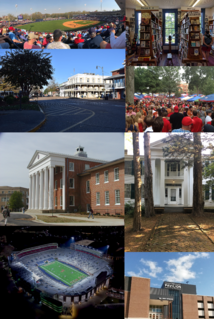
Oxford is a city in, and the county seat of, Lafayette County, Mississippi, United States. Founded in 1837, it was named after the British university city of Oxford.
Gisela Marie Augusta Richter was a classical archaeologist and art historian. She was a prominent figure and an authority in her field.
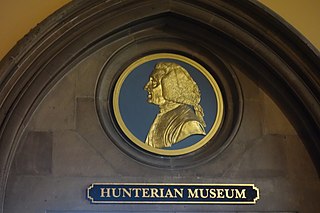
The University of Glasgow's museum dedicated to William Hunter is the oldest museum in Scotland. It covers the Hunterian Museum, the Hunterian Art Gallery, the Mackintosh House, the Zoology Museum and the Anatomy Museum, all located in various buildings on the main campus of the University in the west end of Glasgow.
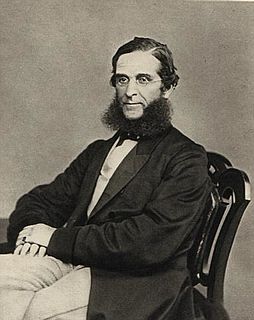
Sir John Evans was an English archaeologist and geologist.

Dumbarton Oaks is a historic estate in the Georgetown neighborhood of Washington, D.C. It was the residence and garden of Robert Woods Bliss (1875–1962) and his wife Mildred Barnes Bliss (1879–1969).

Cabinets of curiosities were collections of notable objects. The term cabinet originally described a room rather than a piece of furniture. Modern terminology would categorize the objects included as belonging to natural history, geology, ethnography, archaeology, religious or historical relics, works of art, and antiquities. The classic cabinet of curiosities emerged in the sixteenth century, although more rudimentary collections had existed earlier. In addition to the most famous and best documented cabinets of rulers and aristocrats, members of the merchant class and early practitioners of science in Europe formed collections that were precursors to museums.

Rowan Oak, also known as William Faulkner House, is William Faulkner's former home in Oxford, Mississippi. It is a primitive Greek Revival house built in the 1840s by Robert Sheegog. Faulkner purchased the house when it was in disrepair in the 1930s and did many of the renovations himself. Other renovations were done in the 1950s. One of its more famous features is the outline of Faulkner's Pulitzer Prize–winning novel A Fable, penciled in graphite and red on the plaster wall of his study. It is now owned by the University of Mississippi.

The History of Science Museum in Broad Street, Oxford, England, holds a leading collection of scientific instruments from Middle Ages to the 19th century. The museum building is also known as the Old Ashmolean Building to distinguish it from the newer Ashmolean Museum building completed in 1894. The museum was built in 1683, and it is the world's oldest surviving purpose-built museum.
Lewis Evans (1853–1930) was an English businessman and scientific instrument collector. His collection was the nucleus of the History of Science Museum, Oxford.
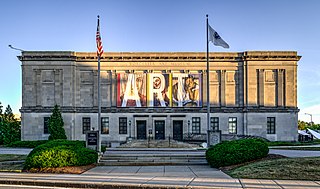
The Worcester Art Museum, also known by its acronym WAM, houses over 38,000 works of art dating from antiquity to the present day and representing cultures from all over the world. WAM opened in 1898 in Worcester, Massachusetts, and ranks among the more important art museums of its kind in the nation. Its holdings include some of the finest Roman mosaics in the United States, outstanding European and American art, and a major collection of Japanese prints. Since acquiring the John Woodman Higgins Armory Collection in 2013, WAM is also home to the second largest collection of arms and armor in the Americas. In many areas, it was at the forefront in the US, notably as it collected architecture, acquired paintings by Monet (1910) and Gauguin (1921), presented photography as an art form (1904) The Worcester Art Museum also has a conservation lab and year-round studio art program for adults and youth.
David Moore Robinson was an American Classical archaeologist credited with the discovery of the ancient city of Olynthus. While he was a prolific writer and advisor, he also has gained notoriety due to his plagiarism of one his students.

The Red Lodge Museum is a historic house museum in Bristol, England. The original building was Tudor/Elizabethan, and construction began in 1579–1580, possibly to the design of Sebastiano Serlio. The main additional building phases are from the 1730s and the early 19th century.
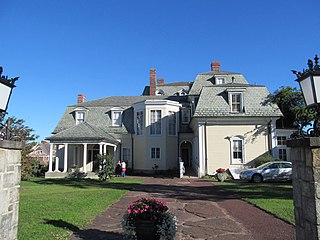
Wistariahurst is a historic house museum and the former estate of the Skinner family, located at 238 Cabot Street in Holyoke, Massachusetts. It was built in 1868 for William Skinner, the owner of a successful silk spinning and textile business, and is named for the abundant wisteria vines which cascade across its eastern facade. Originally constructed in Williamsburg in 1868, the mansion designed by Northampton architect William Ferro Pratt was moved to Holyoke in 1874, following the devastating flood which swept away the original Skinner mills. Following the death of Belle Skinner, its music room was operated as a private museum from 1930 to 1959, housing the Belle Skinner Collection of Old Musical Instruments, before their donation by the family to Yale University. Since 1959 it has been operated as the Wistariahurst Museum, and is open to the public. The property was listed on the National Register of Historic Places in 1973.

John McCrady was a Louisiana painter and printmaker. McCrady was born in Canton, Mississippi and was raised in the American South. After winning a scholarship from the Art Students League of New York for his "Portrait of a Negro," McCrady studied art with Thomas Hart Benton and Kenneth Hayes Miller. McCrady went on to become one of the best-known twentieth-century southern artists and was known for depicting scenes from the South, particularly images of southern African Americans. He also founded the McCrady Art School in 1942 on Bourbon Street in New Orleans.

Theora Hamblett was an American painter, one of the first Mississippi folk artists to achieve national prominence. Hamblett's paintings can be divided into three categories: memory paintings, dream paintings, and landscape paintings.
















